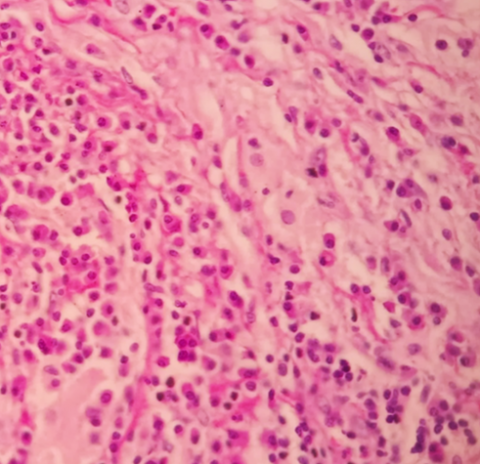Usted está aquí
Peruvian Journal of Neurosurgery
Isolated intracranial Rosai-Dorfman disease: case report
JORGE ZUMAETA S, FERNANDO PALACIOS S, WILLIAM ANICAMA L, CLAUDIA BURGOS J.
Abstract (Spanish) ||
Full Text ||
PDF (Spanish) ||
PDF (English)
ABSTRACT
Introduction: Rosai-Dorfman disease is a pathology of histiocytic, proliferative, idiopathic and benign type characterized by sinus histiocytosis and massive lymphadenopathy. The most frequent clinical presentation is painless bilateral cervical lymphadenopathy. Extra-nodal involvement occurs in 43% of cases and central nervous system (CNS) involvement in 4%. CNS involvement is more common in men and manifests itself as a mass in the cranial dura, which may or may not be associated with lymph node involvement.
Clinical case: We present the case of a 51-year-old woman with a history of sinusitis, with a clinical picture of holo-cranial headache, associated with periods of disorientation and ideomotor apraxia. MRI showed a right parieto-occipital extra-axial lesion, contrast sensor with implantation in the cranial dura. A right parietal craniotomy was performed with subtotal resection of the lesion. The pathological anatomy was reported as Rosai-Dorfman disease of meninges. The evolution after surgery was favorable with remission of symptoms.
Conclusion: Rosai-Dorfman disease should be within the differential diagnosis of lesions based on implantation in the dura. Its diagnosis is eminently histological. Although there is no specific therapy, surgical removal is the most effective treatment. Adjuvant therapies such as steroids and radiation can help control residual or recurrent disease.
Keywords: Histiocytosis Sinus, Lymph Nodes, Dura Mater, Meninges, Craniotomy (source: MeSH NLM)



